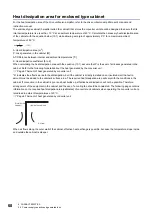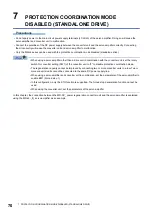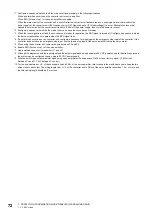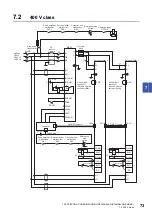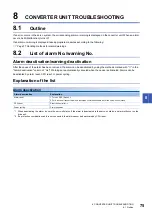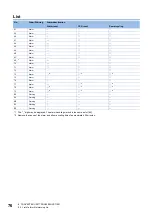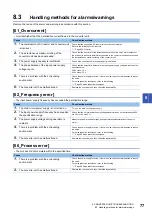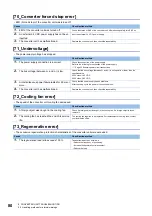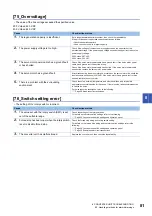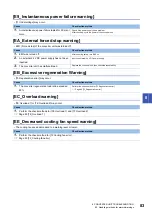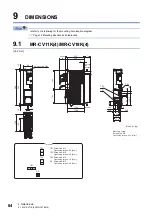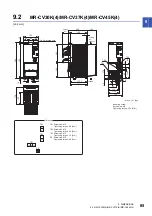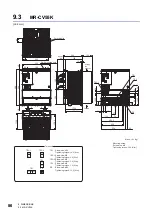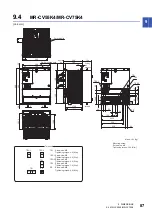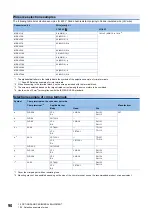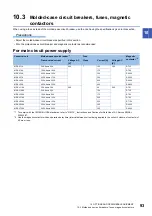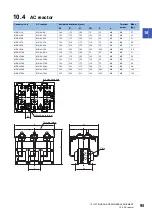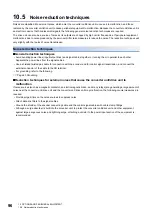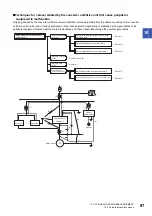
82
8 CONVERTER UNIT TROUBLESHOOTING
8.3 Handling methods for alarms/warnings
[77_Main circuit device overheat]
• The inside of the converter unit overheated.
[7E_Overload 1]
• The load exceeded the overload protection characteristics of the converter unit.
[7F_Overload 2]
• The load exceeded the overload protection characteristics of the converter unit.
Cause
Check/action method
1.
The ambient temperature exceeded the specified
value (55 °C).
Check the ambient temperature, and if the temperature exceeds the specified value,
lower the ambient temperature.
2.
The power was turned on and off repeatedly
under the overload status.
Check if the overload status occurred frequently.
If the overload status occurred frequently, review the operation pattern.
3.
A cooling fan, heat sink, or opening is clogged.
Clean the cooling fan, heat sink, or openings.
4.
The converter unit has malfunctioned.
Replace the converter unit, then check the repeatability.
Cause
Check/action method
1.
A current larger than the continuous output
current of the converter unit flowed.
Check the effective load ratio of the converter unit.
If the effective load ratio of the converter unit is too high, take corrective actions as
follows:
• Reduce the load.
• Check the operation pattern.
Cause
Check/action method
1.
A current larger than the short-time output current
of the converter unit flowed.
Check the effective load ratio of the converter unit.
If the effective load ratio of the converter unit is too high, review the operation pattern.

